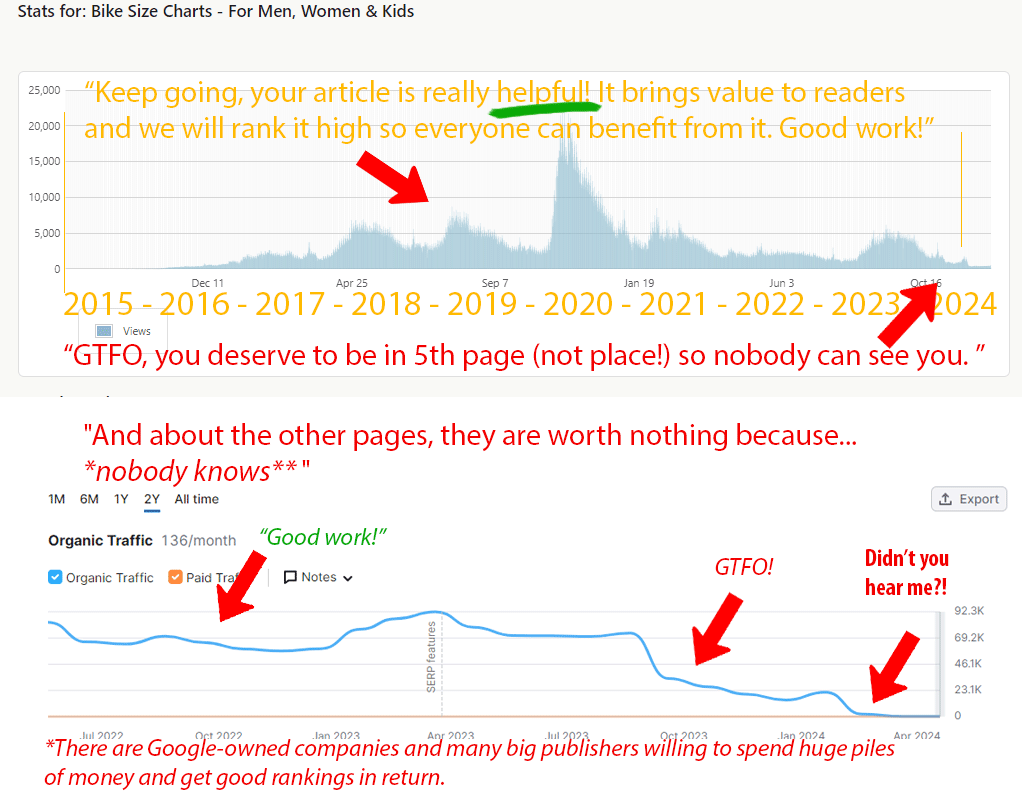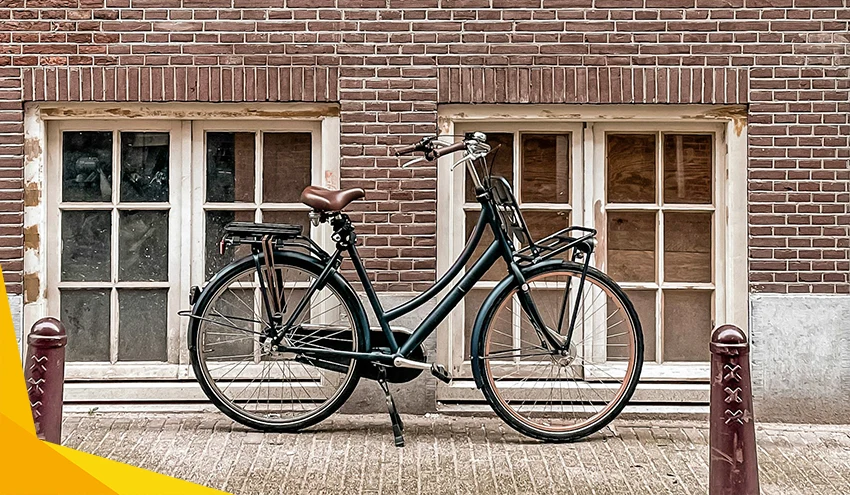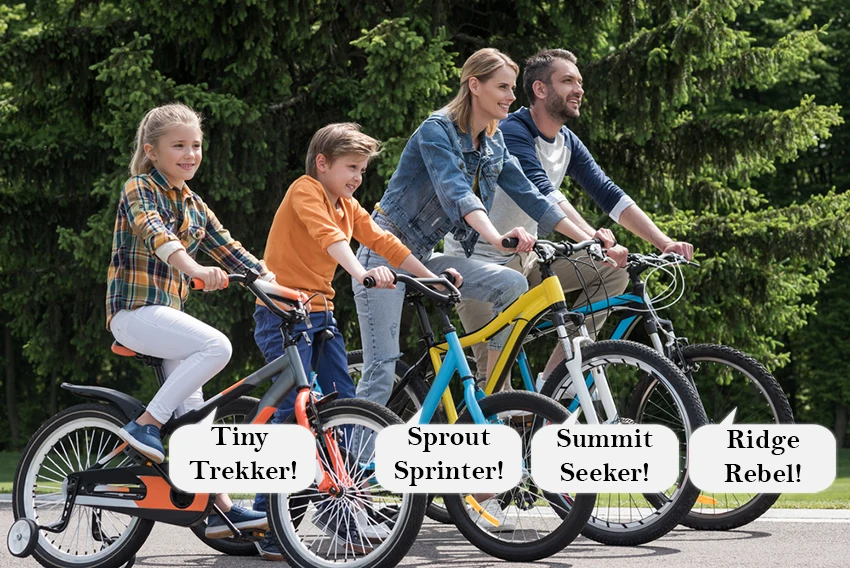It’s clear that the bike industry is in a rough spot right now — the demand is far greater than the supply. Will bikes ever be back in stock? This is the big question that both consumers and retailers want an answer to. We share our predictions below.
As we all know, everyone and their mother wanted to get on a bike and start cycling when Covid hit in 2020. We don’t blame them—cycling allowed people to avoid crowded public transportation, spend time outside, and stay fit without going to the gym.
However, the cycling industry struggled to meet demand, and bike shops soon ended with empty shelves. The supply chain has still not recovered, especially when it comes to affordable models.
So will bikes ever be back in stock?
The short answer: They will, but not anytime soon. The supply chain recovered slightly in 2022 and we should see more bikes reaching retail shops, but we shouldn’t expect full recovery before the second half of 2023.
To give you the longer answer (and one that makes more sense), we need to see why there is a global bike shortage in the first place and what the bicycle industry is doing to solve it.
Contents
What Is Causing the Global Bike Shortage?
The global bike shortage problem is complex and multifaceted. We can say it began in the 1980s when bike companies started moving their production to Asian countries in order to reduce costs.
As a result, the supply chain grew more complicated over the years and became almost completely import-dependent. In 2019, 90% of all bikes sold in the US came from China.
Most companies maintained a low inventory because the supply chain was very reliable in pre-Covid times. As a result, when factories across Asia closed in 2020 due to lockdowns, manufacturers were caught between a rock and a hard place. Some of these countries, such as Malaysia and Vietnam, are still in periodic lockdowns.
Supply Chain Problems
The bike parts required to assemble a complete bike often come from around 30 different suppliers. If one of them can’t keep up with the demand, the entire process comes to a halt.
For example, Shimano makes each product in a separate factory. They can’t just increase production in another to make up for the shortcomings.
The global shipping container shortage is not helping the problem either. The Suez Canal blockage that happened earlier in 2021 just added fuel to the fire. As a result, the price of containers soared from around $2,000 pre-Covid to around $25,000 today.
We should also not forget that the demand for bicycles is still high and doesn’t show signs of waning.
According to Dick Sorenson, a sports industry analyst for the NPD Group, “the continued growth in cycling is a strong indication of an industry poised for long-term health.”
Therefore, we should not expect the demand to decrease. The bike shortage and supply chain problems won’t solve themselves any time before 2023.
How Did Bike Availability Change in 2021?
According to the NPD Group, the April 2020 sales of bikes and cycling gear grew a combined 75% to $1 billion compared to the previous year. This was unprecedented growth, but the trend spilled over into 2021.
New research shows that “the cycling equipment revenue grew by another 15% to $8.5 billion in the 12 months ending with July 2021, compared to the previous year.” These numbers don’t indicate a slowdown compared to 2020—rather, the demand remained the same, but the supply couldn’t quite keep up.
Despite that, the supply chain has seen some improvements in 2021 compared to the last year.
Most bike shops were not fully out of stock, but there were few new models hitting the shelves. Consumers still have to wait between 6 and 18 months to get their hands on a new bike.
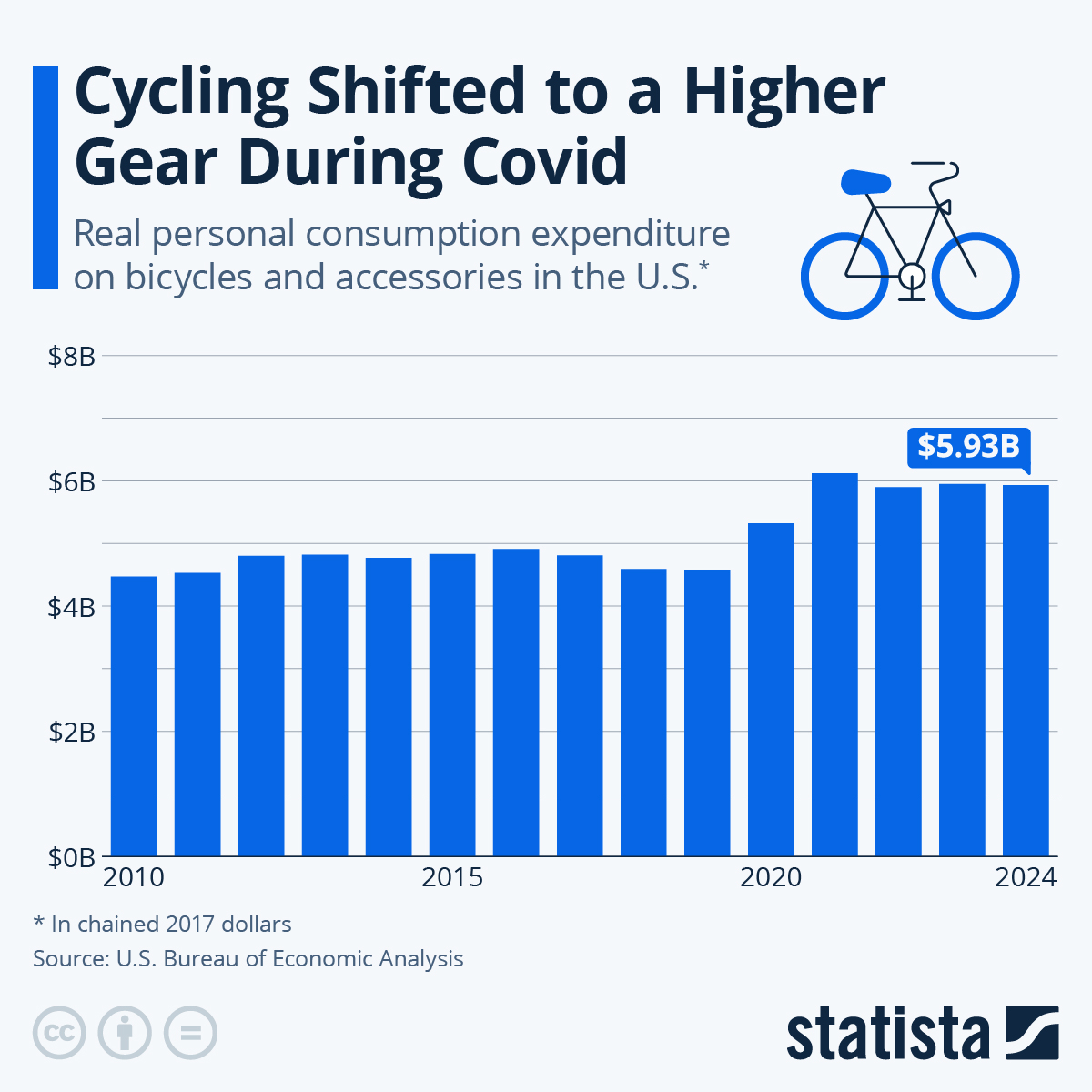
Many bike shop owners report that they still have little or nothing in stock. As a result, a lot of retailers are not making much money and customers have few options to choose from.
Local bike shops are switching their focus to bike repairs to stay afloat, but the availability of replacement parts is slowing things down in this area as well.
For example, only 5% of bicycle tubes that were ordered last year in Canada came into the country. Repairs that used to take one day before the pandemic are now taking weeks to complete.
Therefore, purchasing a new bike in 2022 is possible, but it’s still very hard. You will probably have to wait for several months and you’ll likely have to settle for a bicycle that was not your first choice.
What Can We Expect in 2022/2023?
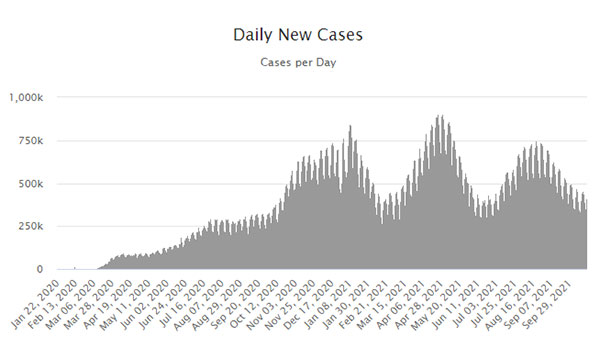
If you start asking around when the bike shortage will end, the most common answer you’ll receive is: nobody knows. But we can make some reliable predictions based on what we know about the current situation.
The resolution of the supply-demand problem in the cycling industry depends on a lot of factors, some of which include:
- Global Covid infections
- Global lockdowns
- Availability of raw materials
- Availability of bike components
- Bike assembly rates
- Availability of shipping containers
- Global freight situation
Lead times should go down as the majority of big bike brands are announcing new product lines across different categories. Buying a new bike will still be very hard, but not as impossible as it used to be in 2020 and 2021.
Getting your hands on a sub-$1,000 bike will remain the biggest challenge. The same goes for e-bikes, which have seen a whopping 240% increase in sales in 2021—the highest compared to all other categories.
Therefore, if you want to celebrate a NBD next year, we recommend pre-ordering a bike right now. Products have been pre-sold a long way into the future across the bike industry. Also, be prepared to spend more than you wanted since prices are expected to go up as well.
When Will Things Go Back to Normal?
According to the majority of leading industry experts and marketing managers of international cycling brands, the bike shortage is expected to normalize sometime in 2023.
The reason for that is that the demand for bikes across all categories, from entry-level to superbikes, has been extremely high and shows no signs of slowing down.
The supply chain requires some time to recover as shipments are delayed and ports around the world are struggling to fulfill orders.
Davide Campagnolo, the CEO of the Fulcrum brand, predicts that this big demand cannot last forever and that it will decrease in the summer of 2023.
Additionally, Pat Hus, Bianchi‘s CEO for North America says that we should look at the big brands as the main predictors. Once the large companies (such as Trek, Specialized, and Giant) begin to catch up and re-stock bike retailers again, we should begin to see a return to some normality.
With all of this in mind, we can expect the bike industry to fully recover by the end of 2023 and the beginning of 2024. Until then, brace for a turbulent ride.
How Will the Bike Shortage Affect Future Prices?
The rules of supply and demand dictate that the prices of products go up when the demand is high and the supply is low. That’s exactly what’s happening in the cycling industry, so it doesn’t come as a surprise that the prices of bike products have already gone up by 10%–15% last year.
This is not the only reason why the prices have gone up. Another big factor is freight costs.
Namely, before Covid, shipping a container from Asia to the US would cost you $2,000. Today, you’d need to pay more than $25,000 to do the same.
Considering that you can fit 265 bikes per container on average, we can calculate that shipping costs went up from $7.55 to $94.33 per bike.
This trend is expected to continue, so we will most probably see another 10%–15% increase in the following years. Therefore, a bike that used to cost $1,000 before the pandemic will cost around $1,300 next year.
Want to learn more about how the global pandemic has changed the cycling industry? See our article on the biggest changes.
Tips
Beware of scams
With the increased demand for bikes and bike parts, there has been an increased prevalence of scams and scam websites trying to take advantage of would-be bike buyers. Especially with online shopping.
As so many retail stores have closed down, and lockdowns persist intermittently it is difficult to trust a seller that you have never purchased from before.
Here are a few red flags to watch out for, and a few tips to help you avoid scams:
- 1. A price that seems too good to be true. If you’ve been scouring the market for a specific bike for months, and all of a sudden, you happen upon a seller that is offering this exact bike for half the price of competitors, this is certainly a red flag. There is too little inventory in the market right now for sellers to be selling their products extremely cheaply. This is most likely a scam.
- 2. Pay attention to how the website looks. Reputable retailers typically put a lot of time, money, and effort into making their website look professional and trustworthy. If you happen upon a website that is selling bikes for cheap, but it just doesn’t look right – mismatched text, blank white backgrounds, and no Contact page – trust your instincts and steer away.
- 3. Avoid postings that lack information or photos. It is easy to sell a bike that doesn’t exist if the buyer never asks for any proof. Never buy a bike off of words alone, and don’t be afraid to ask the seller for additional pictures. Especially if the bike is used. There could be unforeseen damage to the frame, or the bike might not match what is listed.
- 4. Use trusted retailers and forms of payment. Well-known, big-name companies typically offer warranties and accept returns in some form. As well as using trusted forms of payment such as credit cards or PayPal. Avoid buying from sketchy sellers that ask for cash or a check in the mail. It is hard to follow the paper trail if the transaction goes wrong.
Longer shipping times
Not only has the pandemic increased shipping costs for bike and bike parts manufacturers. It has increased shipping times too.
For many manufacturers, 2-4 weeks was the old timeline for shipping a bike. It depended on where it came from and where it was going.
In 2022, shipping times have inflated to 2-4 months for most manufacturers, and sometimes even longer. The blockage of the Suez Canal surely held up some bikes, and that is not the only delay that we have seen.
Be patient
There isn’t much that you can do to help, unfortunately.
The bike industry is trying just as hard as everyone else to recover and prosper through this pandemic.
Thus, the best thing that you can do is to be patient. The progress of the global pandemic is outside of your control. Worrying about it is only adding unnecessary stress.
Support local bike shops
Although bike shops are selling more bikes than ever, many are struggling to turn a profit and keep up with demand.
The unexpected bike boom mid-pandemic put many local bike shops on the back foot.
They had to hire additional workers and pay for exorbitant shipping costs.
Mechanics have had a hard time as well, as many bike parts and replacements are backordered or out of stock. Thanks to that repair times are longer than ever.
Many staff members work long hours to try and keep up with demand. Unfortunately, they still have to deal with angry customers when their bike isn’t fixed it a day.
We ask that you continue to support your local bike shops as much as you can. Especially by giving your time and patience to these workers as they struggle to keep up with the complex and booming industry of bike selling.
Maintenance (to prevent problems)
Of course, the biggest way to help local bike shops is to buy a bike and then take care of everything on your own at home.
That means equipping yourself with the proper tools and materials to repair and maintain your bike – this includes, but is not limited to: tire sealant, spare tubes, a floor pump, bar tape, chain lube, and a set of Allen keys.
There are thousands of guides and videos online that will walk you through almost any type of bike repair or maintenance, from changing a flat tire to mounting a set of tubeless tires.
By maintaining your bike on your own, you will avoid the long lines and wait times at bike shops, and never have to worry about going to the shop for a spare part and realizing it is sold out.
Frequently Asked Questions
Is there a global shortage of bikes?
Yes, there is a global shortage of bikes caused by a broken supply chain. The demand for new bikes is far outstripping the supply, so bike manufacturers and retailers cannot keep up with the incoming orders. If you want a new bike, be prepared to wait for months.
Will bikes ever be back in stock?
Bikes are expected to be back in stock by the end of 2023. By that time, the demand for new bikes should drop, the shortage of shipping containers should resolve, and the production rates should start to catch up with the orders.
Why is there a bike shortage in the UK and the US?
The bike shortage in the UK and the US is mainly caused by the broken supply chain between these countries and their Asian partners. The UK and the US import up to 90% of their bikes from China, whose factories cannot keep up with the demand.
Why are bikes so expensive now?
Bikes are expensive at the moment because of high demand and low supply. A lot of people want a new bike, but retailers have few to offer. On top of that, shipping costs have increased significantly as well, which has also led to a growth in bike prices.
Are bikes hard to find right now?
New bicycles are extremely hard to find right now. The situation is better compared to last year, but consumers still need to wait months to receive the bike that they want. This is especially true for entry-level bikes and e-bikes that are especially high in demand.
Why are all mountain bikes out of stock?
Mountain bikes are out of stock for the same reasons that all other bikes are out of stock. The supply cannot keep up with the demand. Bike manufacturers cannot produce enough bicycles and components. It’s hard to ship these products from Asia because of a broken supply chain.



